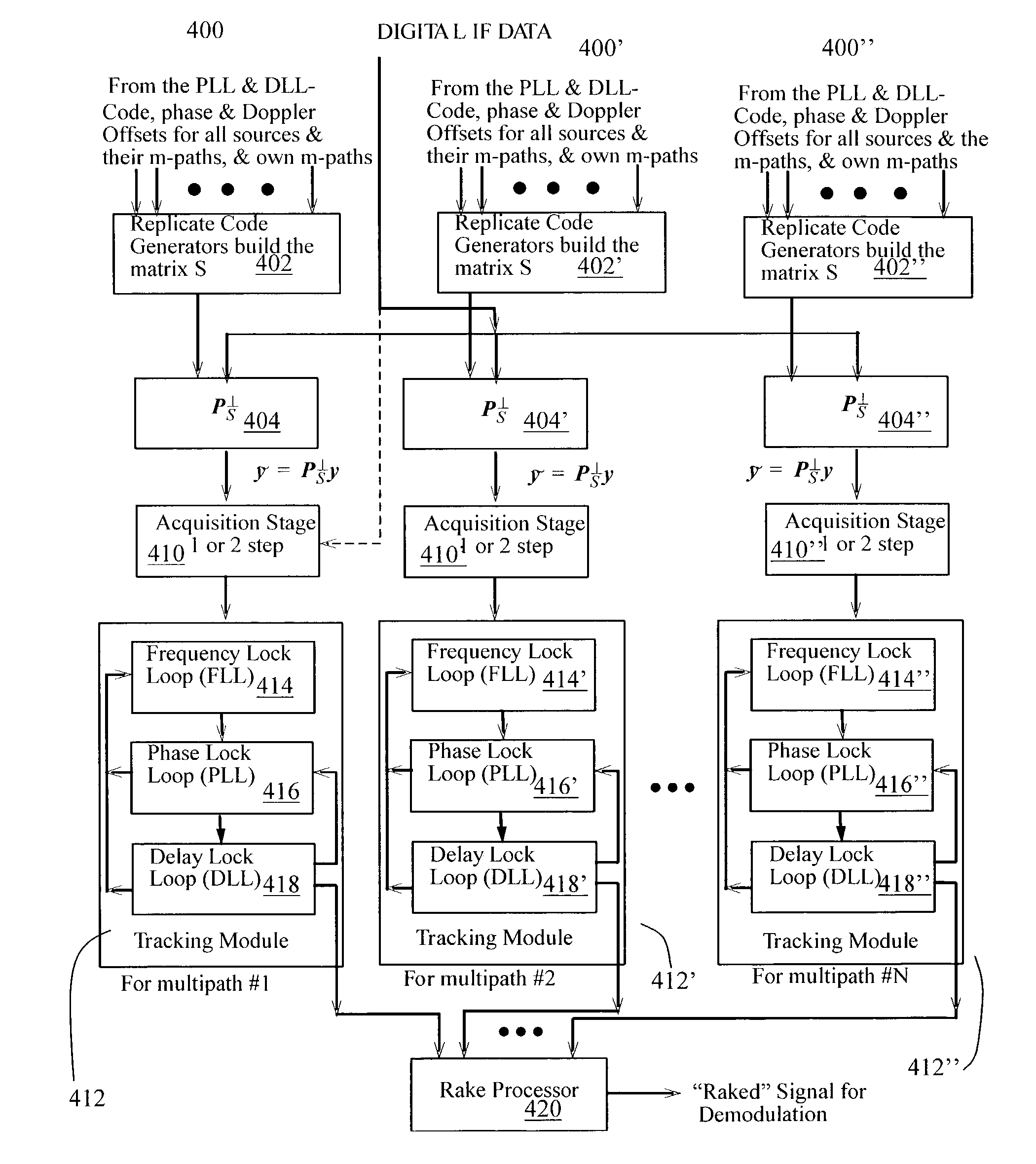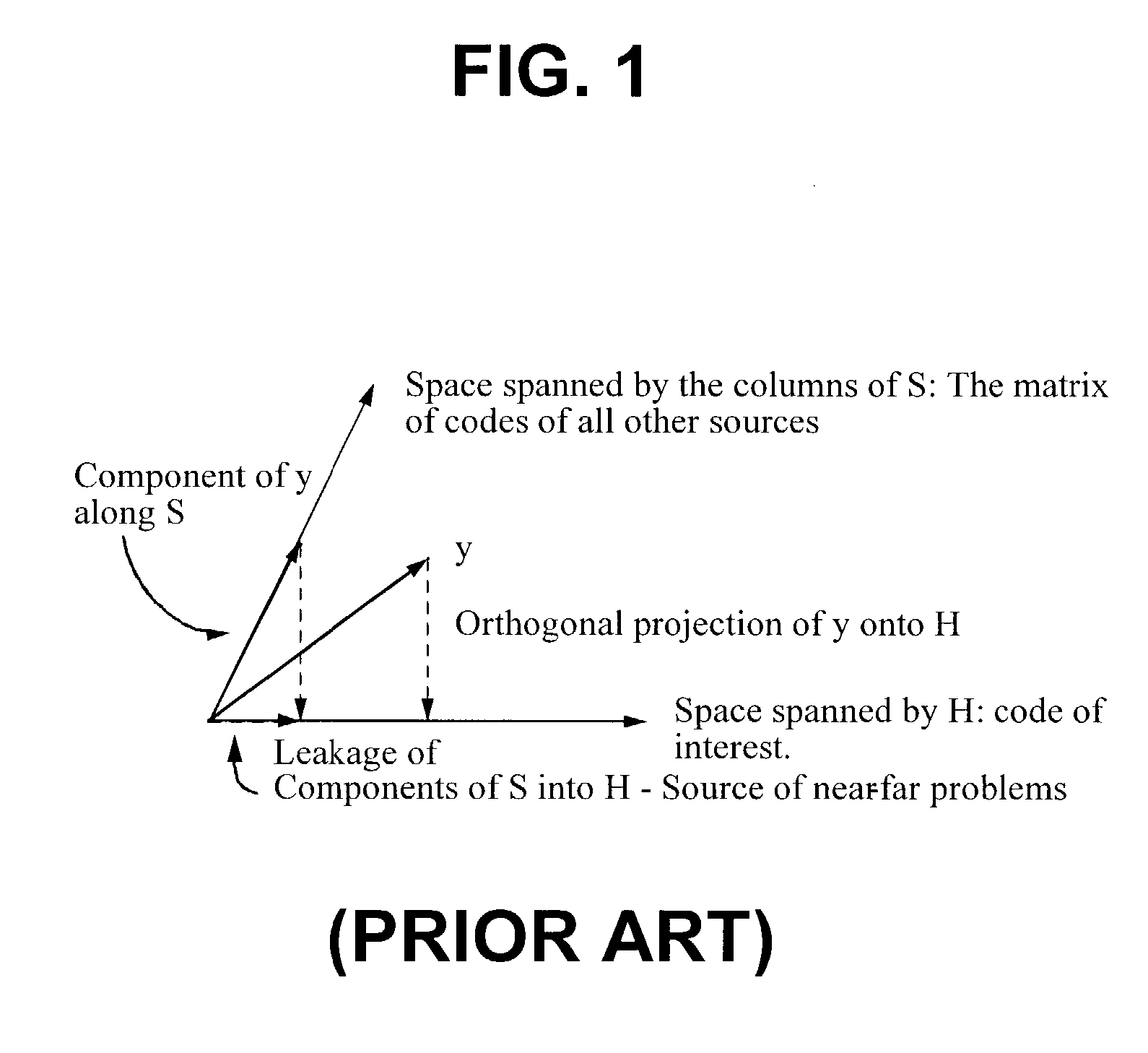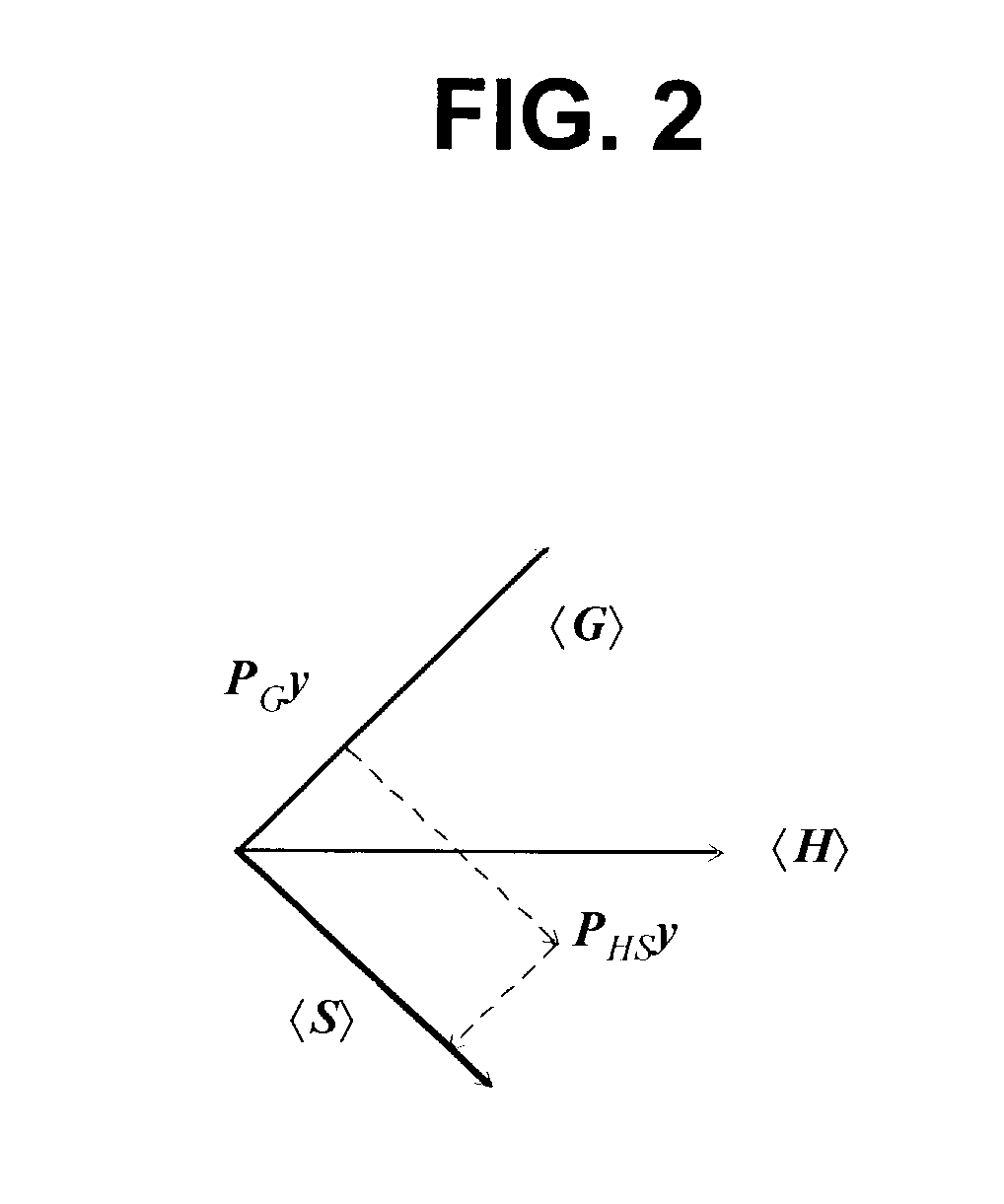Construction of an interference matrix for a coded signal processing engine
a signal processing engine and interference matrix technology, applied in the field of methods and apparatuses, can solve the problems of complex receivers, interference from other sources, and complexity, and achieve the effect of facilitating acquisition, tracking and demodulation of signals
- Summary
- Abstract
- Description
- Claims
- Application Information
AI Technical Summary
Benefits of technology
Problems solved by technology
Method used
Image
Examples
example 1
[0264]This example is of a telecommunications embodiment of the construction of the S matrix and issues involved with the formation of S. These issues are discussed in detail in the following sub-sections.
[0265]In the case of wireless communication in the forward link, it is assumed that the mobile does not have any prior knowledge about which channels are active other than the pilot, paging and synchronization channels. Moreover, it does not have any prior knowledge of the relative powers of the various channels including the traffic channels. Specifically in CDMAOne (see IS-95), one could cancel all 64 channels (for complete cancellation of a base station) or a subset of the channels at the appropriate code, Doppler and phase offsets estimated from the pilot channel. The following discussion pertains directly to IS-95, but with some changes, e.g., the addition of QOF codes, supplementary channels and QPSK modulation, it would be possible to easily extend this telecommunications em...
PUM
 Login to View More
Login to View More Abstract
Description
Claims
Application Information
 Login to View More
Login to View More - R&D
- Intellectual Property
- Life Sciences
- Materials
- Tech Scout
- Unparalleled Data Quality
- Higher Quality Content
- 60% Fewer Hallucinations
Browse by: Latest US Patents, China's latest patents, Technical Efficacy Thesaurus, Application Domain, Technology Topic, Popular Technical Reports.
© 2025 PatSnap. All rights reserved.Legal|Privacy policy|Modern Slavery Act Transparency Statement|Sitemap|About US| Contact US: help@patsnap.com



